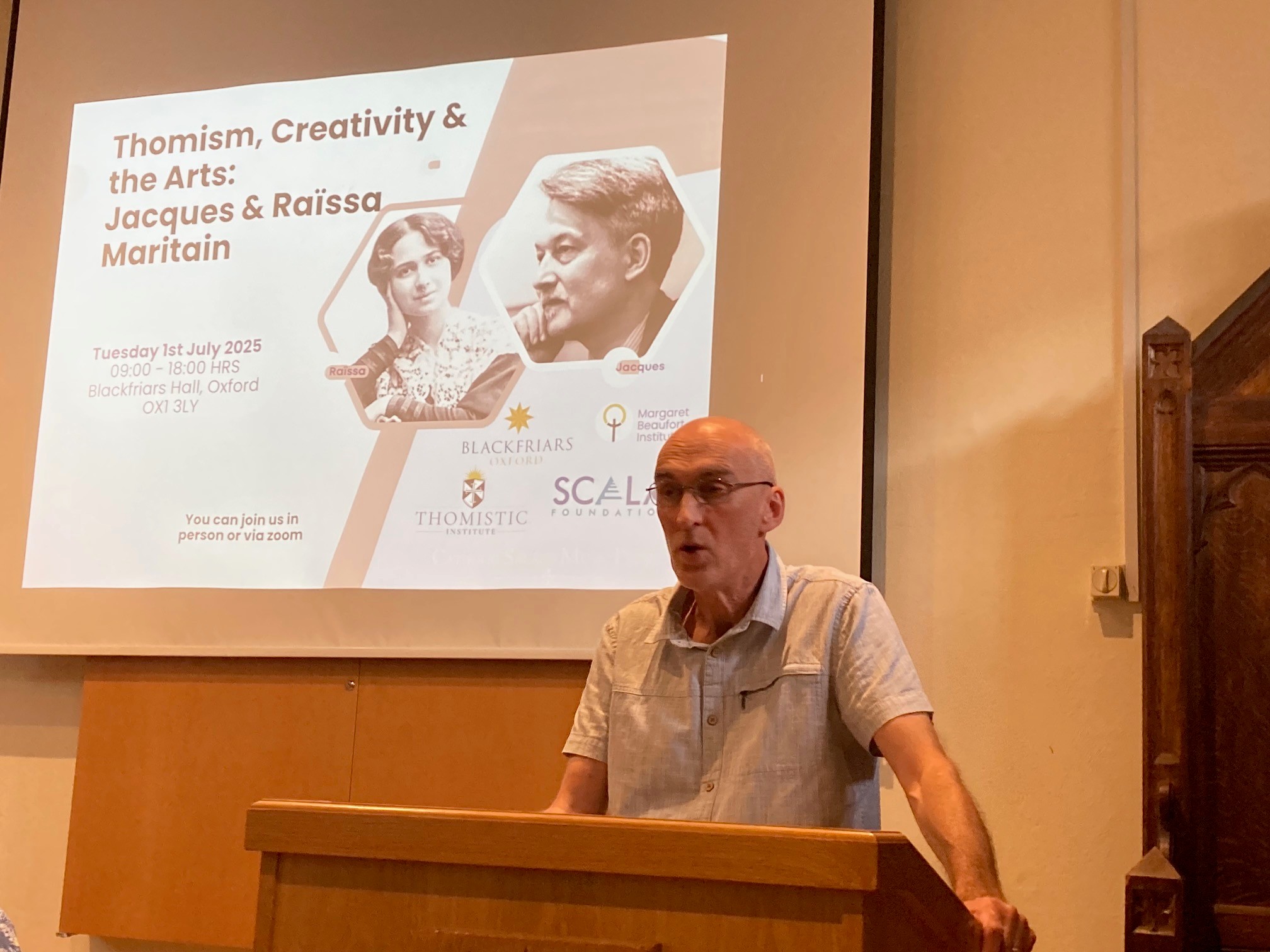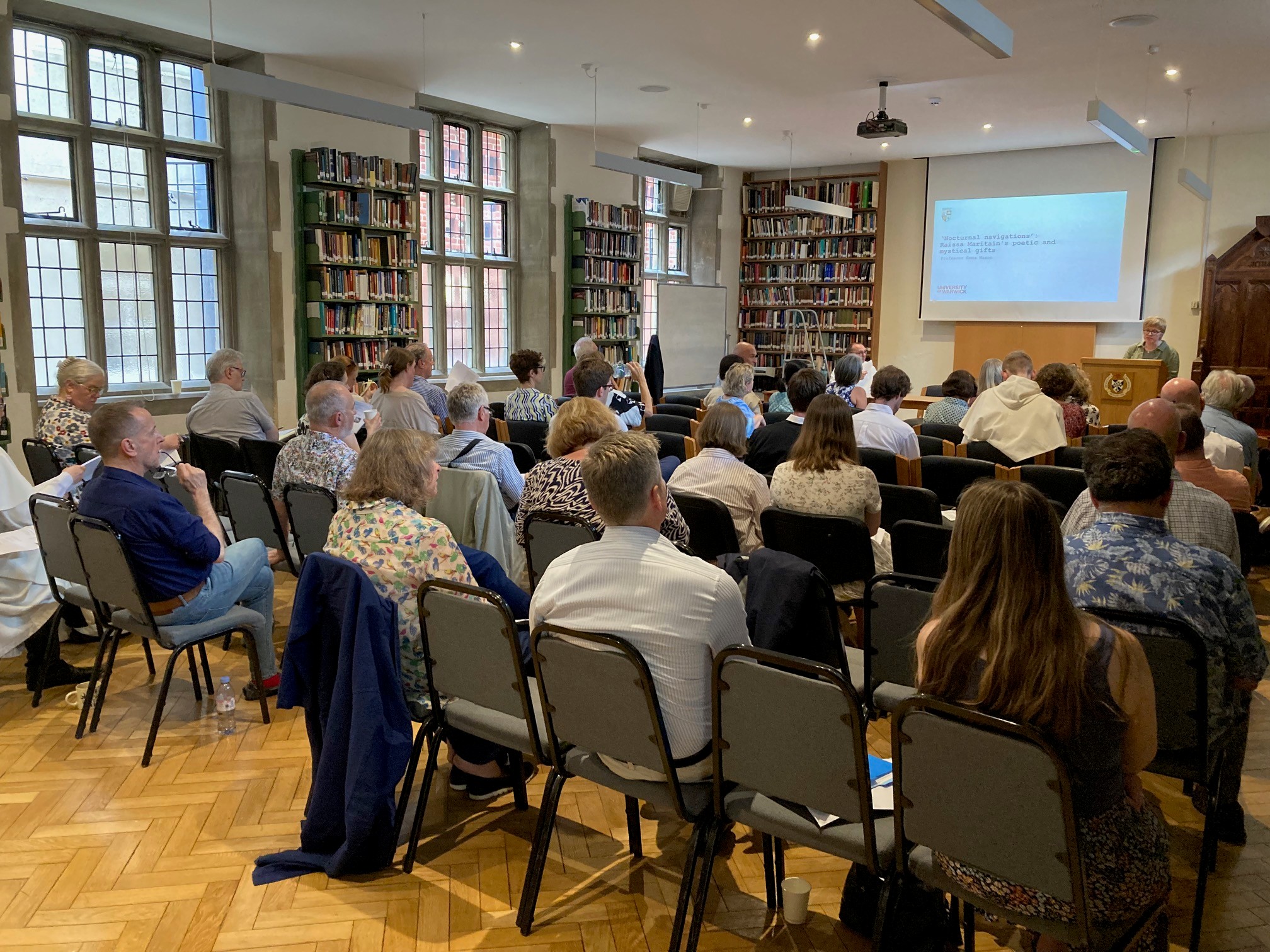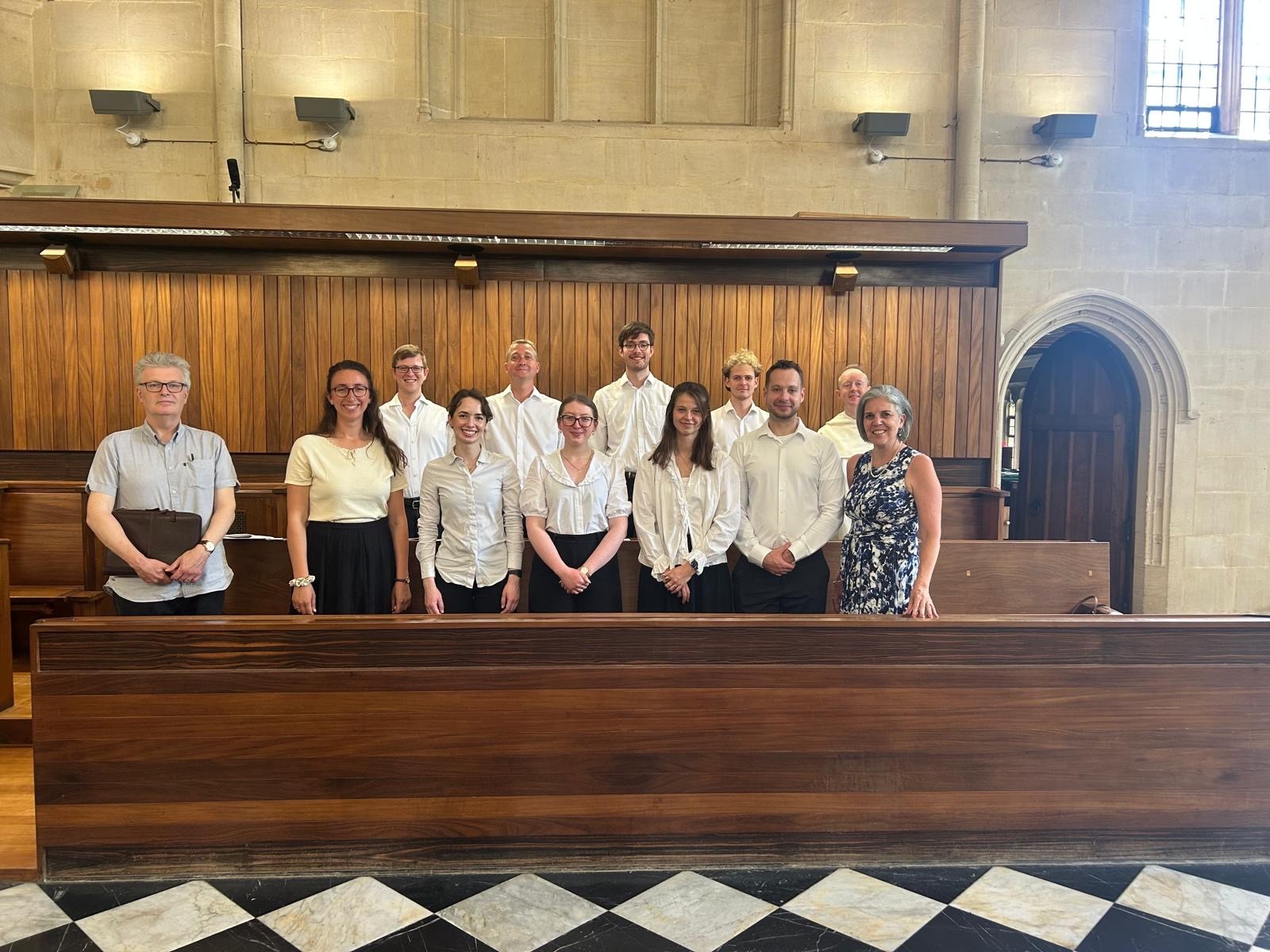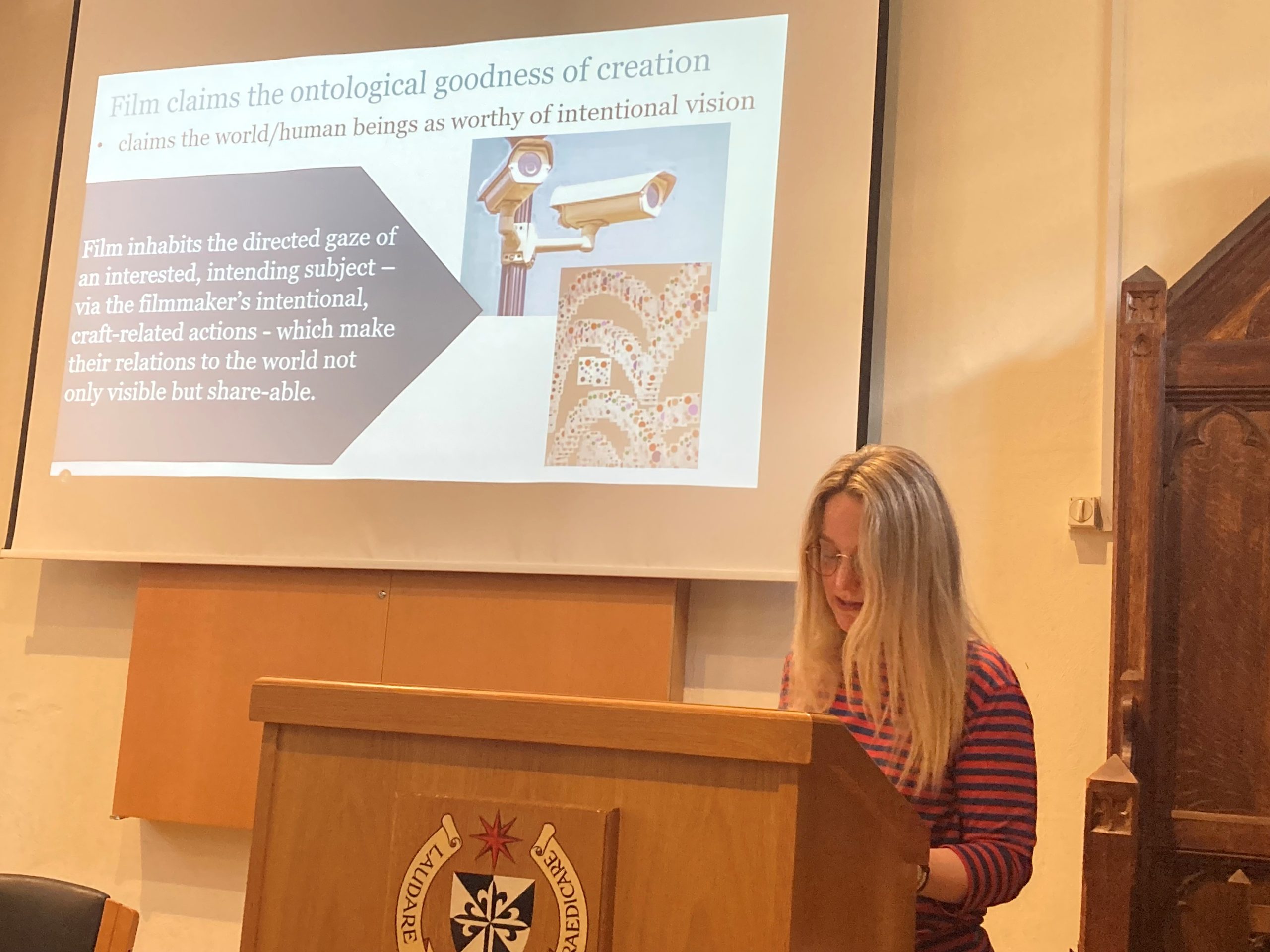What makes a good artist? Following the great success of our first conference on the French Catholic intellectual couple Jacques and Raïssa Maritain last year, led by Research Fellow Chris Grey, Margaret Beaufort and Blackfriars Hall, Oxford joined forces for a follow-up. Thomism, Creativity and the Arts: Jacques and Raïssa Maritain at Blackfriars on 1st July. And thanks to the SCALA Foundation and the Thomistic Institute, speakers were able to come from the US, the centre of Maritain studies since Jacques and Raïssa were given refuge at Princeton and Notre Dame during World War II.
Artists and intellectuals tend to be drawn to each other in a common engagement with the great questions about reality. Jacques and Raïssa are great examples. Key figures in the French Catholic Revival of the early 20th century, they met as students at the Sorbonne. Jacques was an agnostic. Raïssa was the atheist daughter of Jewish refugees from the Russian pogroms: she was also a fine poet. Their search for truth was rewarded with the gift of Catholic faith. Discovering the writings of Aquinas and sharing them with their wide circle of friends offered them an exciting synthesis of faith and reason. But it also raised further questions, as Aquinas, although himself a poet, wrote relatively little about beauty. In our conference, several philosophers, Alice Ramos, Jan Bentz, Chris Grey, Brad Elliott OP and Greg Kerr explored Jacques’ development of Aquinas’ thought along the line of the artist’s creative intuition as a non-deductive form of reason. This theoretical approach dialogued with real art: the wartime poetry of Raïssa was brought to us by Emma Mason and Albert Robertson OP, and emerged as both avant-garde and deeply rooted in Old Testament lamentation, not explaining suffering but touching it deeply. We also heard the poetry of James Matthew Wilson, saw the film work of Katja Frimberger (The Silent Witness, with Simon Bishopp), and heard the music of our keynote, the distinguished composer Sir James MacMillan, who spoke on setting the Mass to music in a secular world. Margarita Mooney Clayton brought us a theological synthesis through beauty, around the frescoes in the Maritains’ Princeton home.
Perhaps, though, alongside the Margaret Beaufort’s and Blackfriars’ shared values of hospitality and encounter, the most uplifting aspect of the conference was its insertion into the liturgy of the Dominican community, chanting the psalms, along with choral music by Palestrina, Sir James MacMillan, Peter Carter and Dominic White, sung by the Schola Albion under the direction of Peter Carter of the Catholic Sacred Music Project. Research and art together, where they belong, in the communal praise of God.
Dominic White OP
Here are some images from the event — stay tuned for more on our social media channels
Christopher Grey (as initiator of the project).

Aula (lecture theatre)

The Schola Albion with Sir James MacMillan (L), Dr Dominic White OP and Prof Margarita Mooney Clayton (R front).

Dinner with the speakers in our refectory.

Dr Katja Frimberger speaking on Learning to just be there: Film as Public Pedagogy.

